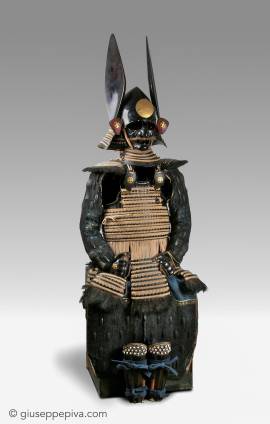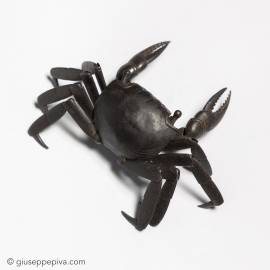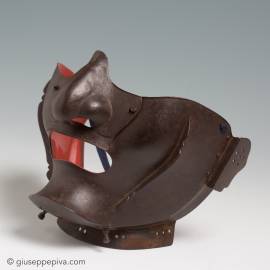Nuinobe-dō Tosei GusokuEarly to mid Edo period, 17th-18th century This authentic samurai armor is of very good quality. Laced in white with parts covered either with black lacquer or leather, it bears overall a cross-shaped family crest (kurosu kamon).The stunning kawari kabuto (extraordinary helmet) of momonari outline is fitted with two original very unusual large decorations (wakidate) in the shape of hamaguri clamshells. The front is fitted with a sun-shaped maedate.The iyo-zane dō (cuirass made of small plates laced side-by-side) is decorated with sophisticated...
WORKS FOR SALE
19th-20th CenturyLength: 15 cm with extended limbs The iron crab is constructed of numerous hammered plates, jointed inside the body; the claws open and the limbs and eyes move.Jizai Okimono are realistically shaped figures of animals made from iron, copper, shibuichi or shakudo. Their bodies and limbs are articulated, and can be moved like real animals; among these figures we can find models of dragons, birds, fishes, snakes, lobsters, crabs and insects.There are only few dated pieces, the earliest known is a dragon bearing the signature of Myochin Muneaki and dated 1713; from the XVIII...
Half mask for samurai armorLate Edo period (1615 - 1867)-19th centurySigned: MunechikaMyōchin school The severe expression and the lack of wrinkles denotes the ryubu, or "martial". typology.
Copyright © 2016 - giuseppe piva - VAT: 05104180962










